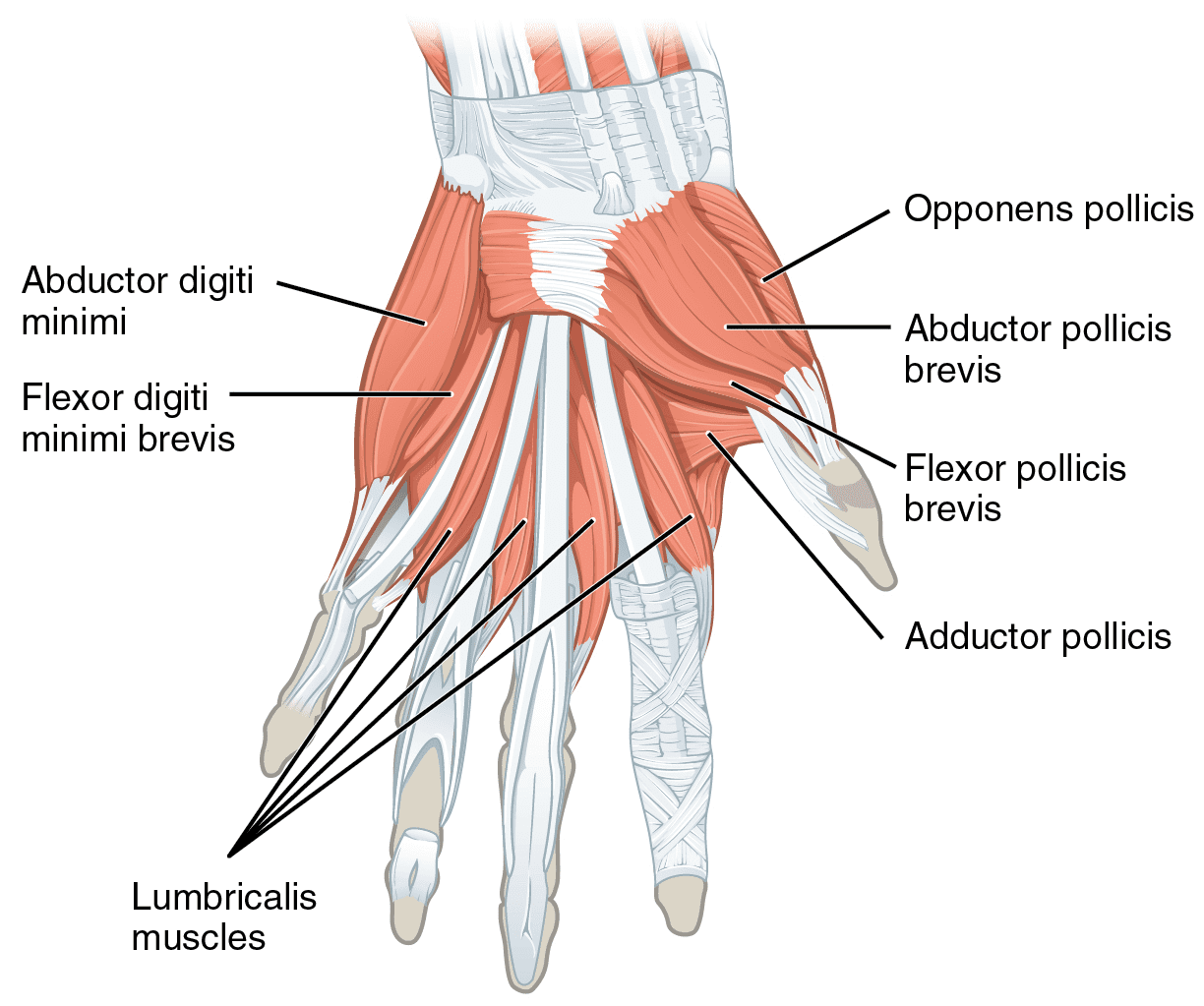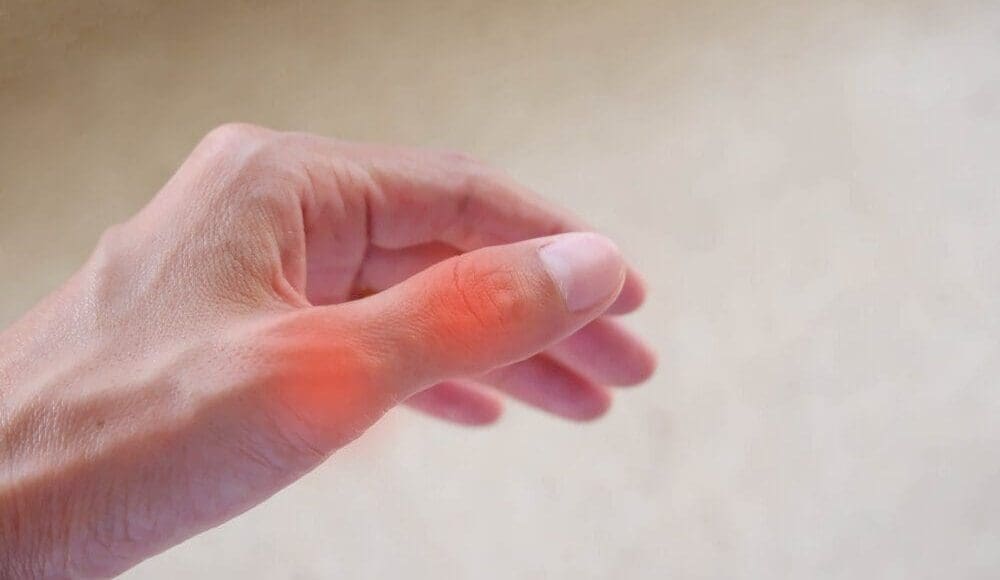Table of Contents
Introduction
Many people use their hands when going to work or doing normal things in their daily lives. The hands correlate with the five finger digits that provide grip strength when holding onto items in various sizes and weights that the hand muscles can handle. The hands have multiple muscles, tendons, and ligaments that travel past the wrist and forearms. These three components in the upper body have a casual relationship with the shoulders to provide stability and mobilization to the upper extremities. When the various muscles, tendons, and ligaments succumb to traumatic forces or injuries that cause pain to the forearms, wrists, and hands, it can develop myofascial pain syndrome or trigger points to generate overlapping risk profiles that mask other symptoms. Today’s article looks at the thumb muscles, how myofascial trigger pain affects the thumb, and how to prevent and manage the trigger thumb from occurring further in the hands. We refer patients to certified providers specializing in hand and wrist pain therapies to aid many people suffering from trigger thumb and fingers affecting their hands. We also guide and inform our patients by referring them to our associated medical providers based on their examination when appropriate. We established that education is a great solution to asking our providers profound questions the patient requests. Dr. Jimenez DC takes note of this information as an educational service only. Disclaimer
A Look At The Thumb Muscles
Have you been experiencing a strong decrease in your grip when holding something? What about hearing popping or snapping sounds when moving your fingers or thumb? Or have you experienced pain near your wrist or at the palm of your hands? When people are experiencing pain along their fingers, especially thumbs, it can develop into myofascial trigger pain along the thumb. As part of the hand, the thumb has muscles that provide movement and motor skills to make the thumb mobile. The two muscles: the adductor pollicis and the opponens pollicis, allow the thumb to move and touch each of the other finger digits. The adductor pollicis in the hand has deep, intricate, superimposed layers of muscles, tendons, and fascial compartments that work together to be versatile to the thumb. This muscle is triangular-shaped with a two-headed structure, and its main function is to adduct the thumb. This means that the adductor pollicis allows the thumb to move, touch the palm, and be close to the index finger. To that point, this muscle provides the thumb pinching and gripping movements.

The other muscle is known as the opponens pollicis, and this muscle helps provides small hand movements for the thumb by allowing it to touch the tips of each of the digits. The opponens pollicis muscle works together with the adductor pollicis muscle as it allows the hand to cup objects while also making the pinching grip possible for the hand. The oppponens pollicis muscle also works with the various muscles, nerves, and bones to be in sync in providing movement to the hands and provide mobility strength.
How Myofascial Trigger Pain Affects The Thumb

The adductor and oppenens pollicis muscles can provide gripping and pinching motions to the hands without causing pain; however, when the thumb muscle ligaments have been overused or been through trauma, they can develop into myofascial trigger pain along the thumb muscles, causing trigger thumb. Studies reveal that causes for the trigger thumb to form are repetitive gripping motions and overusing of the thumb muscle. This causes the flexor tendon sheath to narrow along the thumb joint and causes clicking or popping sensations when the thumb is trying to extend, thus leading to the development of myofascial trigger pain. According to the book, “Myofascial Pain and Dysfunction: The Trigger Point Manual,” written by Dr. Janet G. Travell, M.D., when myofascial trigger pain begins to affect the hand’s functionality, it can make many individuals lose the pinching motion in their hands as they aren’t able to hold the object they are using. Even simple actions like pulling weeds in the garden can cause stress on the thumb and cause tenderness to the affected muscle.
An Overview Of Trigger Finger & Trigger Thumb-Video
Are you having difficulty holding items in your hands? Do you feel like your fingers are locking up constantly? Or does it hurt when you extend your thumb or fingers? If you have been experiencing these pain symptoms in your hands and fingers, it could be due to myofascial trigger pain associated with the thumb and fingers along the hands. Trigger fingers or trigger thumbs is a common ailment that affects the mobility function of the hands and can invoke pain in the affected joints causing them to lock up. The video above explains what trigger fingers and trigger thumbs, the symptoms and causes, and how to treat and manage the pain. When pain is associated with the hands and fingers, causing trigger points to form along the affected muscle, many individuals begin to feel hopeless when they aren’t able to hold items. Thankfully, there are various ways to manage trigger thumb and prevent pain from causing further damage.
How To Manage & Prevent Trigger Thumb

When trigger thumb begins to affect a person’s ability to grasp objects, it can cause them to feel miserable and can greatly affect their quality of life. All is not lost, as there are various ways to manage trigger thumbs and prevent future pain symptoms from continuously affecting a person’s mobility in their hands. Studies show that multiple treatments like splinting can help gain mobility back to the thumb and prevent the joint from locking up, causing pain. Other therapies like hand and wrist stretches can help loosen up the stiff tendons and muscles and even bring back mobility strength to the hands. Many doctors advise their patients to start using different hand and wrist exercises to relax the aching muscles and get circulation back to the hands. Another way to prevent the trigger thumb from affecting the hands is to do stretch exercises for the adductor and opponens pollicis muscles with heat to relax and loosen the stiff muscles while also restoring flexion and extension to the thumb.
Conclusion
The thumbs provide the functionality to the hands by allowing gripping and pinching motions when people pick up objects. The two muscles that provide this motion are the adductor and oppnens pollicis muscles. When traumatic forces begin to affect these two muscles in the thumb, it can develop a trigger thumb associated with pain. This causes the thumb to lock up and invoke pain when someone tries to extend their thumbs. Trigger thumbs occur when individuals overuse the thumb muscles and causes the grip strength to weaken. Luckily, available treatments can help restore mobility to the thumb and prevent it from locking up.
Reference
Acosta, Jonathan R, et al. “Anatomy, Shoulder and Upper Limb, Hand Adductor Pollicis.” In: StatPearls [Internet]. Treasure Island (FL), StatPearls Publishing, 11 Aug. 2021, https://www.ncbi.nlm.nih.gov/books/NBK526059/.
Akhtar, Sohail, et al. “Management and Referral for Trigger Finger/Thumb.” BMJ (Clinical Research Ed.), BMJ Publishing Group Ltd., 2 July 2005, https://www.ncbi.nlm.nih.gov/pmc/articles/PMC558536/.
Nguyen, John D, and Hieu Duong. “Anatomy, Shoulder and Upper Limb, Hand Opponens Pollicis Muscle.” In: StatPearls [Internet]. Treasure Island (FL), StatPearls Publishing, 11 Aug. 2021, https://www.ncbi.nlm.nih.gov/books/NBK546603/.
Pencle, Fabio J, et al. “Trigger Thumb.” In: StatPearls [Internet]. Treasure Island (FL), StatPearls Publishing, 20 July 2022, https://www.ncbi.nlm.nih.gov/books/NBK441854/.
Travell, J. G., et al. Myofascial Pain and Dysfunction: The Trigger Point Manual: Vol. 1:Upper Half of Body. Williams & Wilkins, 1999.
Disclaimer
Post Disclaimer
Professional Scope of Practice *
The information on this blog site is not intended to replace a one-on-one relationship with a qualified healthcare professional or licensed physician and is not medical advice. We encourage you to make healthcare decisions based on your research and partnership with a qualified healthcare professional.
Blog Information & Scope Discussions
Welcome to El Paso's Premier Wellness and Injury Care Clinic & Wellness Blog, where Dr. Alex Jimenez, DC, FNP-C, a board-certified Family Practice Nurse Practitioner (FNP-BC) and Chiropractor (DC), presents insights on how our team is dedicated to holistic healing and personalized care. Our practice aligns with evidence-based treatment protocols inspired by integrative medicine principles, similar to those found on this site and our family practice-based chiromed.com site, focusing on restoring health naturally for patients of all ages.
Our areas of chiropractic practice include Wellness & Nutrition, Chronic Pain, Personal Injury, Auto Accident Care, Work Injuries, Back Injury, Low Back Pain, Neck Pain, Migraine Headaches, Sports Injuries, Severe Sciatica, Scoliosis, Complex Herniated Discs, Fibromyalgia, Chronic Pain, Complex Injuries, Stress Management, Functional Medicine Treatments, and in-scope care protocols.
Our information scope is limited to chiropractic, musculoskeletal, physical medicine, wellness, contributing etiological viscerosomatic disturbances within clinical presentations, associated somato-visceral reflex clinical dynamics, subluxation complexes, sensitive health issues, and functional medicine articles, topics, and discussions.
We provide and present clinical collaboration with specialists from various disciplines. Each specialist is governed by their professional scope of practice and their jurisdiction of licensure. We use functional health & wellness protocols to treat and support care for the injuries or disorders of the musculoskeletal system.
Our videos, posts, topics, subjects, and insights cover clinical matters and issues that relate to and directly or indirectly support our clinical scope of practice.*
Our office has made a reasonable effort to provide supportive citations and has identified relevant research studies that support our posts. We provide copies of supporting research studies available to regulatory boards and the public upon request.
We understand that we cover matters that require an additional explanation of how they may assist in a particular care plan or treatment protocol; therefore, to discuss the subject matter above further, please feel free to ask Dr. Alex Jimenez, DC, APRN, FNP-BC, or contact us at 915-850-0900.
We are here to help you and your family.
Blessings
Dr. Alex Jimenez DC, MSACP, APRN, FNP-BC*, CCST, IFMCP, CFMP, ATN
email: coach@elpasofunctionalmedicine.com
Licensed as a Doctor of Chiropractic (DC) in Texas & New Mexico*
Texas DC License # TX5807
New Mexico DC License # NM-DC2182
Licensed as a Registered Nurse (RN*) in Texas & Multistate
Texas RN License # 1191402
ANCC FNP-BC: Board Certified Nurse Practitioner*
Compact Status: Multi-State License: Authorized to Practice in 40 States*
Graduate with Honors: ICHS: MSN-FNP (Family Nurse Practitioner Program)
Degree Granted. Master's in Family Practice MSN Diploma (Cum Laude)
Dr. Alex Jimenez, DC, APRN, FNP-BC*, CFMP, IFMCP, ATN, CCST
My Digital Business Card


